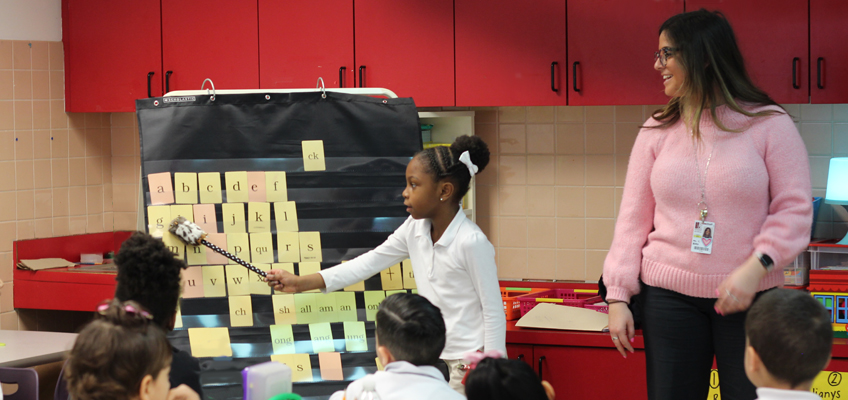Concerns over literacy rates in the U.S. have been around for decades, and discussions around disrupted learning have only increased since 2020. It’s clear from the most recent NAEP scores that students lack fundamental literacy skills, and disrupted learning spurred by the COVID-19 pandemic compounded this.
At Wilson, we know that to achieve literacy for all, we must recognize that learning to read is a complex process that must be informed by the full range of research on what should be taught and how. Instruction should include skills across the range of Scarborough’s Reading Rope (2001): both word recognition AND language comprehension skills. This is critically important for emerging readers as well as those struggling to read, including students with dyslexia.
With our 35 years of experience addressing literacy challenges, we have deep knowledge about instruction founded on the science of reading. We also know that delivery of instruction using the principles of implementation science makes all the difference.
The Time is Now
Teacher training and effective programs are essential. Establishing these within an implementation framework will promote the teacher and student success we all are seeking.
Preservice training must be aligned with the science of reading to build teacher knowledge and offer educators the background and framework they need to get started in classrooms.
Next, adopting effective structured literacy programs in general classrooms will ensure that students have access to the explicit, systematic, and cumulative curriculum that benefits all students and is essential to some. Those who need additional support can be identified early and should be provided with an effective systematic and explicit targeted intervention. Our expertise in foundational skills is invaluable in supplementing comprehensive core ELA programs that try to touch on everything but do not include the deep and structured approach necessary for student success. Fundations® builds foundational skills among young readers; Just Words® helps our students beyond grade three close word-level gaps; and the Wilson Reading System® ensures that students with dyslexia successfully learn to read and spell.
Coupling effective instruction and intervention with deep and ongoing in-service training, including certification programs, will allow teachers to be successful with the full range of student needs. Our mission has always been educator focused, providing the preparation, professional development, and ongoing learning opportunities needed to address gaps in student learning before they arise.
Effective professional learning “focuses on teaching strategies associated with specific curriculum content” (Learning Policy Institute, 2017), so our professional learning opportunities are tied to our specific Wilson programs. Other key elements of effective professional learning include active learning, collaboration with colleagues, curricular modeling of instruction, coaching and expert support, and feedback and reflection, all over a sustained period (Learning Policy Institute, 2017). Our comprehensive planning model with districts (called “COMPASS” to stand for COMprehensive Plans for Achieving Success and Sustainability) incorporates all these components so that we build both teacher knowledge and skills in using our programs, and administrators can confidently engage us in a partnership to raise literacy achievement in their schools.
Finally, we recognize the equally critical role administrators play in the success of their schools. Their support of teachers affects the implementation of selected curricula as intended and is the linchpin of student success. Both our COMPASS Plans and Wilson Implementation Network for Principals (WINPRIN) support administrators with actionable steps so they achieve the success they are striving for.
What’s Next? A Collective Response
As educators across this nation, we have the research needed to guide our approach forward: We know what effective curriculum and instruction looks like, and we know what teachers and administrators need to drive student success. Though there always will be more research, there is no need to wait. We have the science to inform instruction in our classrooms today. A commitment to time, space, and resources is what is now required to build a nation of lifelong readers. Let’s get it done.

